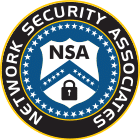The National Institute of Standards and Technology (NIST), a renowned authority in cybersecurity, has recently jazzed up its requirements for cybersecurity, privacy awareness, and training programs. These updates mark the first major revision since 2014 and are aimed at tackling the ever-changing cybersecurity landscape, evolving threats, and the need for comprehensive training and awareness.
Heads up, this information can be technical and is intended for those with a keen interest in the specifics. As a Managed Service Provider (MSP), we are committed to closely monitoring these changes and integrating these strategies into our operations and services to enhance our cybersecurity practices.
NIST SP 800-50r1: Building a Cybersecurity and Privacy Learning Program
NIST’s Special Publication (SP) 800-50r1, titled “Building a Cybersecurity and Privacy Learning Program,” has undergone a substantial revision. Originally published in 2003 as “Building an Information Technology Security Awareness and Training Program,” this document now incorporates new guidance informed by the National Defense Authorization Act for FY21 and the Cybersecurity Enhancement Act of 2014. Here is a breakdown of the key updates and objectives outlined in this revision.
Key Goals of the Update
Integrating Privacy: One of the primary objectives of this update is to integrate privacy into cybersecurity, recognizing the growing importance of protecting sensitive information.
Lifecycle Model: The revised SP 800-50r1 introduces a lifecycle model that allows for ongoing improvements and adjustments, accommodating cybersecurity, privacy, and organization-specific events.
Alignment with NIST Frameworks: The update aligns the learning program with other NIST frameworks and terminology, such as the NICE Workforce Framework for Cybersecurity, NIST Cybersecurity Framework, NIST Privacy Framework, and NIST Risk Management Framework.
Employee-Centric Approach: A significant focus is placed on creating a cybersecurity and privacy culture within organizations, emphasizing the role of employees in risk management.
Integration with Organizational Goals: The update encourages the integration of learning programs with organizational goals, helping organizations manage cybersecurity and privacy risks effectively.
Impact Measurement: Addressing the challenge of measuring the impact of cybersecurity and privacy learning programs is another critical aspect of this revision.
NIST Cybersecurity Framework 2.0
Apart from SP 800-50r1, NIST has also released a draft version of the Cybersecurity Framework (CSF) 2.0, marking the first complete makeover since its initial release in 2014. The CSF is a tool designed to help organizations understand, reduce, and communicate cybersecurity risks.
Key Changes in CSF 2.0
Expanded Scope: The CSF’s scope has been explicitly expanded to cover all organizations, regardless of type or size. This change reflects the evolving nature of cybersecurity threats and the need for comprehensive cybersecurity measures.
Govern Function: A new function called “Govern” has been added, emphasizing the importance of making and executing internal decisions to support an organization’s cybersecurity strategy. It underscores the notion that cybersecurity is a significant enterprise risk.
Improved Guidance: The draft provides improved and expanded guidance on implementing the CSF, especially for creating profiles tailored to specific situations and economic sectors.
Leveraging Technology Frameworks: CSF 2.0 encourages organizations to leverage other technology frameworks, standards, and guidelines, both from NIST and external sources, to enhance their cybersecurity measures.
CSF 2.0 Reference Tool: NIST has introduced the CSF 2.0 Reference Tool, an online resource that facilitates browsing, searching, and exporting of CSF Core data in human-consumable and machine-readable formats.
What This Means For Your Compliance
Navigating compliance requirements can be challenging, especially when it comes to standards like HIPAA, which can lack clarity in terms of the necessary steps for compliance. NIST offers a comprehensive and detailed guide for achieving a strong cybersecurity posture which can greatly contribute to compliance efforts, such as HIPAA. It serves as the benchmark in the field, providing a clear roadmap for protecting not only your organization but also your employees and customers. These updates signify the need for adjustments in how you, your tech team, or your MSP approach cybersecurity to maintain compliance.

